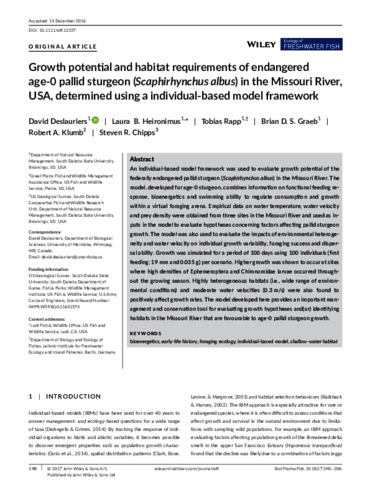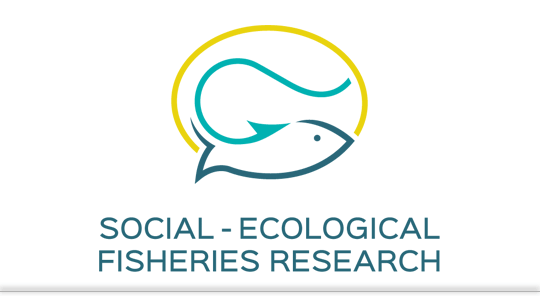An individual-based model framework was used to evaluate growth potential of the federally endangered pallid sturgeon (Scaphirhynchus albus) in the Missouri River. The model, developed for age-0 sturgeon, combines information on functional feeding response, bioenergetics and swimming ability to regulate consumption and growth within a virtual foraging arena. Empirical data on water temperature, water velocity and prey density were obtained from three sites in the Missouri River and used as inputs in the model to evaluate hypotheses concerning factors affecting pallid sturgeon growth. The model was also used to evaluate the impacts of environmental heterogeneity and water velocity on individual growth variability, foraging success and dispersal ability. Growth was simulated for a period of 100 days using 100 individuals (first feeding; 19 mm and 0.035 g) per scenario. Higher growth was shown to occur at sites where high densities of Ephemeroptera and Chironomidae larvae occurred throughout the growing season. Highly heterogeneous habitats (i.e., wide range of environmental conditions) and moderate water velocities (0.3 m/s) were also found to positively affect growth rates. The model developed here provides an important management and conservation tool for evaluating growth hypotheses and (or) identifying habitats in the Missouri River that are favourable to age-0 pallid sturgeon growth.
Growth potential and habitat requirements of endangered age-0 pallid sturgeon (Scaphirhynchus albus) in the Missouri River, USA, determined using a individual-based model framework
Peer-reviewed

Deslauriers, D., Heironimus, B. Rapp, T., Graeb, B. D. S., Klumb, R. A., Chipps, S. R. (2018). Growth potential and habitat requirements of endangered age-0 pallid sturgeon (Scaphirhynchus albus) in the Missouri River, USA, determined using a individual-based model framework. Ecology of Freshwater Fish, 27, 198–208
Published
: 2018
Appeared in
: Ecology of Freshwater Fish, 27, 198–208
